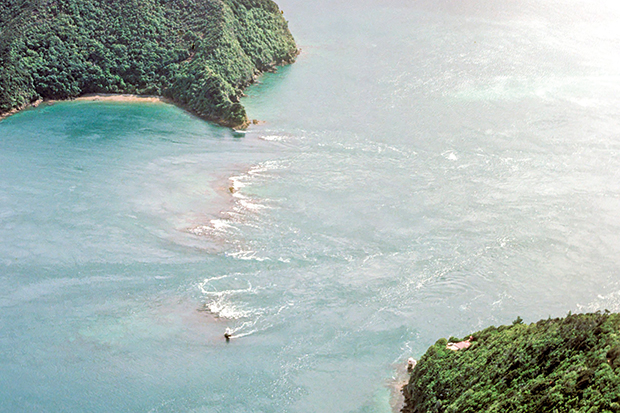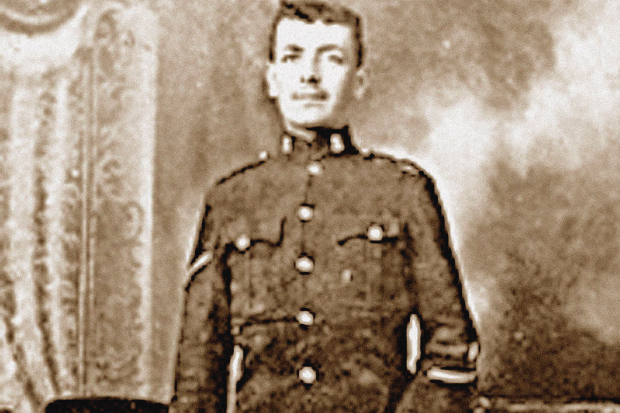Water accounts for 70 per cent of your planet, and 60 per cent of your body. Yet when do you ever stop to consider it? The quirks and habits and secrets of good old H2O were crying out to have a book written about them. That said, it had to be written by the right person. A subject like this could have attracted a complete dullard, the sort of person you dread getting between you and the door at a party. Fortunately, the job went to Tristan Gooley.
His previous books include The Walker’s Guide to Outdoor Clues and Signs and The Natural Navigator. There’s more of the same here, like the trick to getting your bearings from the puddles on a path: there will be more of them on the path’s south side, as the undergrowth at the edge shields that half from the sun. And before you mention the compass in your iPhone, some of the tips will save you in a way Steve Jobs never could: if you get caught in a rip current, for example, swim parallel to the beach to get out of it. Heading straight back to shore is pointless, as the current will simply drag you out. Gooley learned that the hard way in Indonesia.
Water gives rise to some beautiful words. The smell churned up by rain falling on very dry ground is ‘petrichor’. The line of greatest depth along a river is the ‘thalweg’. Waves hitting themselves coming back form a ‘clapotis’ (it means ‘lapping’ in French). That’s the next Farrow and Ball colour chart sorted, but Gooley goes on to explain the difference between flotsam and jetsam. The former is the floating cargo of a shipwrecked vessel, the latter anything that was deliberately jettisoned overboard. A river’s ‘flashiness’, meanwhile, is the extent to which it will rise after rainfall, depending on the land surrounding it. Impervious ground like clay directs the drops quickly into the river, but porous chalk or limestone will soak them up. This is why chalk-stream fishermen say the only useful rain is that which falls before St Valentine’s Day. Anything after February won’t reach the river until after the season has ended in the autumn.
Gooley clearly knows his stuff — and plenty of other people’s stuff, for that matter — but always sides with the layman over the expert. ‘I rail against the naturalists,’ he writes, ‘who think that knowing the name of a plant is better than knowing its character.’ His tales recount wisdom gathered on the ground (literally), often by trial and error, and his joy at discovering something almost makes you feel you did the work yourself. Noticing some ripples in a puddle one day, he realises they can’t have been caused by the wind — apart from the fact that there isn’t any, the ripples are travelling out from the centre rather than from one side to the other. So he hides in the undergrowth, and is rewarded by seeing the bird he’d scared off fly back to resume its bath.
The book doesn’t just cover the rural sections of the waterfront: urban dwellers get a look-in too. Watch a helicopter fly over a city and you’ll realise that wherever possible it follows the river, a convention (often enforced in law) which minimises loss of life in the event of engine failure. And did you know about the Time and Tide bell, hung above the Thames at Trinity Buoy Wharf in London? It’s positioned so that the water washing over it at high tide causes it to ring.
You could follow Gooley’s lead and get up close and observational with the wet stuff. Or you could stay at home, the only water you encounter having been added to by grapes and sitting in a glass nearby as you turn the pages. You’ll learn that ‘nearest the middle of the river’ always wins in Pooh sticks, that a cube of water with sides the length of an average person’s height weighs nearly three tonnes, and that Humphry Davy thought a fishing rod had ‘a fly at one end and a philosopher at the other’. Oh — and dowsing is rubbish. There’s water everywhere if you go deep enough.
A certain charm attaches to The Tree Climber’s Guide, Jack Cooke’s account of ascending dozens of London’s sycamores, oaks, swamp cypresses and the like. Perhaps it’s his reports on the people he sees — a fashion model in Lincoln’s Inn Fields is ‘laid out on a picnic rug like a pale corpse’, while a passenger on the top deck of the 87 bus gives him the finger. Perhaps it’s the animals he encounters, like the Merton squirrel that’s nicked a Kit-Kat still in its wrapper. Or perhaps it’s the capital’s ironies, like the sign near a Temple Gardens statue of the liberty-lover John Stuart Mill warning that climbing the trees is forbidden. But probably it’s the fact that the book’s whole premise is utterly mental.
Got something to add? Join the discussion and comment below.
Get 10 issues for just $10
Subscribe to The Spectator Australia today for the next 10 magazine issues, plus full online access, for just $10.
'How to Read Water: Clues, Signs and Patterns from Puddles to the Sea', £17.00 and 'The Tree Climber’s Guide: Adventures in the Urban Canopy', £12.49 are available from the Spectator Bookshop, Tel: 08430 600033
You might disagree with half of it, but you’ll enjoy reading all of it. Try your first month for free, then just $2 a week for the remainder of your first year.














Comments
Don't miss out
Join the conversation with other Spectator Australia readers. Subscribe to leave a comment.
SUBSCRIBEAlready a subscriber? Log in